
It is hard to disagree that Fred Rogers was one of the most remarkable humans of modern times.
Simple but deeply profound, wise but full of wonder; “Mr. Rogers” lessons shaped generations of young Americans and helped give them the courage to face not only the harsh realities of the external world, but also the confidence to be the person they were called to be.
Many of those very people whom Rogers deeply impacted — among which I proudly count myself — are now being pulled between the tensions of that frightening external world and their calling as providers, as caregivers of children (and parents), as life-partners, and yes … even as workers.
When I was a boy and I would see scary things in the news, my mother would say to me, ‘Look for the helpers. You will always find people who are helping.’ To this day, especially in times of ‘disaster,’ I remember my mother’s words and I am always comforted by realizing that there are still so many helpers – so many caring people in this world.
Fred Rogers
Tomorrow, March 20th 2020 marks what would have been Fred Rogers’s 92nd birthday. With his influence and impact in mind, the team at Simple Thread wanted to share some advice that might help as we approach work in the reality of these uncharted times.
In that spirit, we as a remote-first work company wanted to do something to help. With decades of collective experience working from home we’ve learned a lot the hard way. We don’t presume to have it all figured out, but we hope that for those looking to learn from our past missteps this blog post might help.
Here’s some suggestions our team has on working from home, paired the timeless wisdom of Fred Rogers.
Children feel far more comfortable and secure when things happen predictably – with routines, rituals, and traditions. Those traditions, big or small, create anchors of stability, especially in rough seas.
Fred Rogers
Maybe this isn’t just advice for children. Want to guess what the number one answer was when we polled our team?
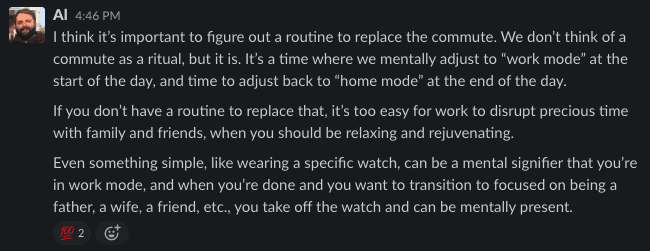
While there will undoubtedly be interruptions, trying to build routines are absolutely essential. Once the commute vanishes, it’s important to discover a routine to replace it.
“I figured out pretty quickly that I needed to still get dressed in a work outfit to keep a routine,” says Branson Lilburn, one of our Senior Software Engineers. “For me that is a set of plain black t-shirts that I only wear for work.”
What kind of routine? It could be anything. Like Mr. Rogers says, it is about creating anchors of stability more than the acts themselves. Anything to signal our brains it’s work or home time. Mr. Rogers routines and rituals are probably some of the things I remember best. Whether putting on a sweater, changing shoes, or feeding the fish those actions signaled intent and purpose.
Could it be getting cleaned up and dressed for the day? Maybe it’s taking a short walk around the block. How about your ritual of French pressing the morning coffee? Start the day with your cherished Merle Haggard LP. Ever think about doing a short meditation with Headspace?
Just because somebody wants to be alone sometimes, it doesn’t mean they don’t love you.
Fred Rogers
For some, location might matter more than routine. And being alone doesn’t mean you don’t love those around you. For a team of product designers and engineers like at Simple Thread, deep work can be an important concept to consider, as concentration helps move mountains in our work.
“I have a strong preference to have a door between me and everything else,” says Principal Engineer Sam Ehlers. “When I started telecommuting, I found that rhythm by shutting myself in a specific room. I have a dedicated office in my basement and a secondary desk in my bedroom when I crave warmth and light.”
Space free of distractions are table stakes for some to feel productive when working. Maybe that space might itself be a routine anchoring us into work mode? I have been surprised at how my children (ages 10,8,&6) understand if I am looking at my laptop when at my work desk they approach more gingerly than when I am doing the same at the kitchen table.
Yet, dedicated space for work might not be possible. If that’s the case, do your best to try and synch up deep concentration work with nap, reading, or screen times for the kids. Of course, there’s always blatant bribery. It’s amazing how much a well-timed popsicle can shape good behavior for a time.
Family members are not the only interruptions to your concentration; it could just as easily be fellow team members.
“Blocking off time on your work calendar so people know you’re heads down is good,” suggested Senior Designer Derek Heilmann. “You simply don’t get that visual cue remotely.”
To that end, working with your team to set expectations and team norms around responsiveness for deep work can be critical. Push yourselves to limit the immediacy of getting an answer could offer massive payoffs in long-term team productivity.
Some days, doing ‘the best we can’ may still fall short of what we would like to be able to do, but life isn’t perfect on any front — and doing what we can with what we have is the most we should expect of ourselves or anyone else.
Fred Rogers
I love this quote so much because every day I fall short in both relationships and work productivity. There are going to be good days where everything seems to fall perfectly into our expectations, and then there are going to be days like Senior Software Engineer’s Mike Hartman’s not long ago.

It happens. That’s okay! We chase the bird out of the house, settle the children, and hit the do-over button.
I once had a boss who lived on the Finger Lakes in New York. Every summertime phone call would be punctuated by cigarette boats blasting by her lakeshore home. They never bothered her; I guess it just became normal background sounds? It confounded and impressed me to no end.
Home has distractions, but doesn’t the office offer its own set of interruptions we must also tune out?
We’ve removed commuting, long lunch breaks, and cubicle prairie dogs. Is our day more flexible than we think? Maybe it is better to roll with the punches and attempt to finish the week strong? Does it mean getting up early to get ahead of the chaos some days?
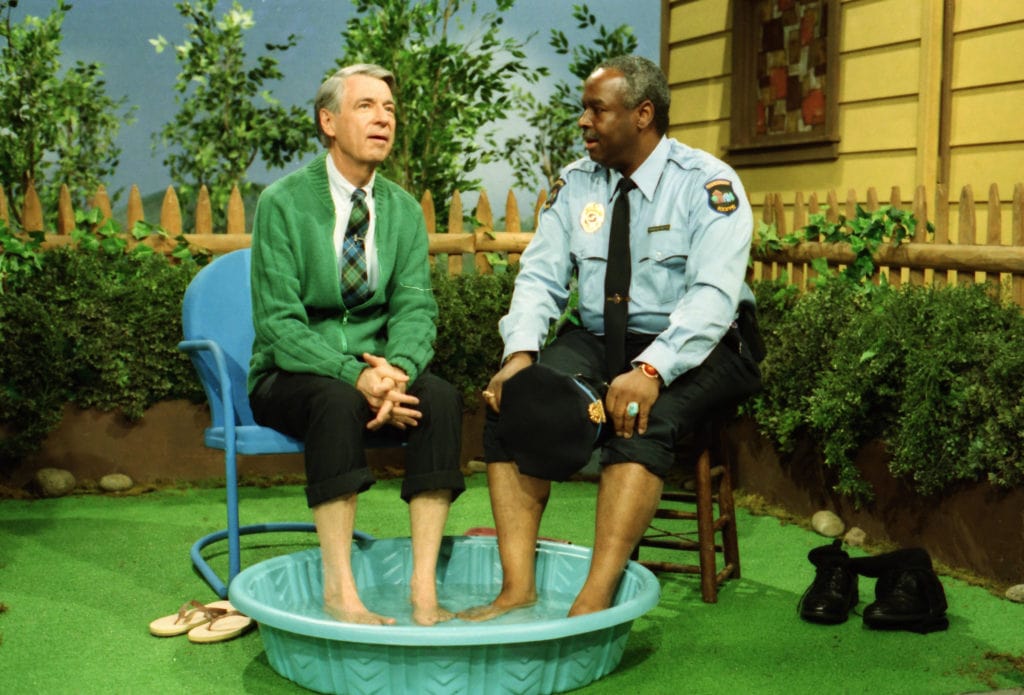
One kind empathetic word has a wonderful way of turning into many.
Fred Rogers
Since our team is unable to swing by someone’s cubicle at any time, the importance of writing takes on a much larger significance. In-person conversations can be “sloppier” because it relies more on non-verbal cues. There’s a lot of power in words, and in the case of a remote team, the written word most of all.
Empathy from the sender and receiver makes all the difference. Writing should take forethought, along with time and care in crafting the concept — all before it is even sent. The onus is squarely on the person initiating to be clear and concise. It takes more time on the front end but the payoff should come from the person receiving the communication.
Conversely, the reader should also empathetically try to assume the best in others communications.
Since no one is a perfect thinker or writer, here’s a plug for Slack (more on Slack later). Unlike email, messages can be easily edited after they are sent. Editing my words is the feature I didn’t know I desperately needed.
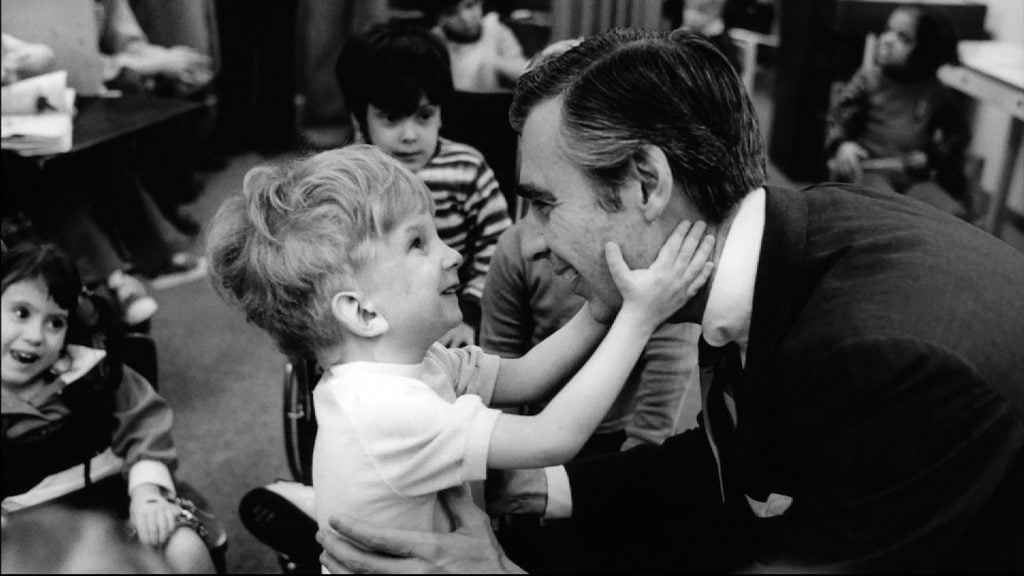
I don’t think anyone can grow unless he’s loved exactly as he is now, appreciated for what he is rather than what he will be.
Fred Rogers
Having kids, especially very young kids needs lots of navigating when working from home. Babies need all that care and intense attention around the clock and that can be an impossible balance. Even older kids who can mostly fend for themselves can be taxing on any home worker trying to concentrate.
“I feel like when my son was born, I had to re-learn how to work remotely,” shared Senior Software Engineer Mike Green. “Figuring out time management is big for me. I had to find times when I could be productive and tailor my work schedule around them, rather than trying to force productivity when I’d prefer to be working.”
Maybe that means sliding your hours in the day somewhat. Any normal, high-functioning team should understand that our current work-from-home arrangement isn’t always going to be a pure nine-to-five endeavor.
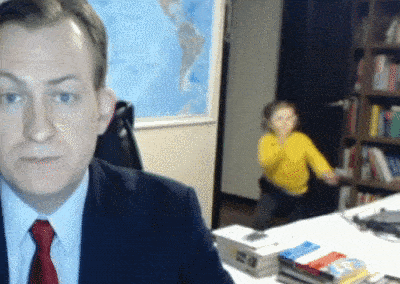
Also, who wants to work with a team who thinks that something like this during a team call wouldn’t immediately make any meeting far, Far, FAR better?
You’ve got to do it, every little bit you’ve got to do it — it’s not easy to keep trying, but it’s one good way to grow.
Fred Rogers
Ever have trouble focusing on a task or set of tasks? Pairing with someone on a project and worried about staying focused? The Pomodoro Technique is a great way to navigate those and many other work projects. Traditionally, the process looks like this:
- Decide on a task to accomplish.
- Start the pomodoro timer (25 minutes, traditionally).
- Focus on the task to accomplish.
- End work when the timer rings and put a checkmark on a piece of paper.
- If less than four checkmarks, take a short break (3–5 minutes), then loop back to #2.
- After four pomodoros, take a longer break (15–30 minutes), reset your checkmarks to zeroand loop back to #1.
In the case of shorter tasks (updating contracts, sending email follow ups, etc.) I relish gamifying my behavior. For tasks requiring more than a single pomodoro, the anticipated breaks help keep me focused.
No pomodoro timer in the house? There’s a million apps to download for your phone. I use the Focus Keeper App to good results.
I think it’s very important — no matter what you may do professionally — to keep alive some of the healthy interests of your youth.
Fred Rogers
Being remote doesn’t mean we don’t share about our lives. I spend a decent amount of time chuckling at my laptop as our team conversations go from serious work to old Disney cartoons, hobbies and home projects, food we are cooking, favorite music, and even how cursed we are by our infernal sports teams.
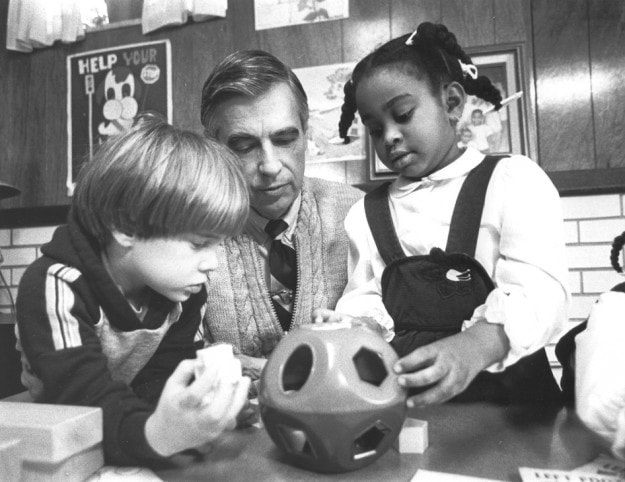
The connections we make in the course of a life–maybe that’s what heaven is.
Fred Rogers
On a remote team, being intentional about celebrating is important. Special events (birthdays, work anniversaries, etc.) help give routine and structure to our work. They help us frame our stories, create depth to our culture, and help us reflect over our accomplishments and give anticipation to what’s next.
Similarly, big work events are obvious whether it be a new project, hitting a milestone, or reaching a goal. Ultimately though, it is about recognizing the people and their unique contributions to those things as much as it is about the accomplishments themselves.
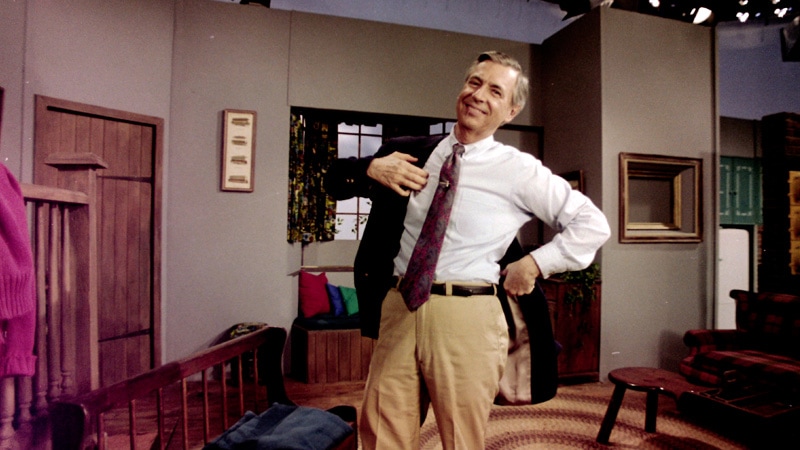
It’s really easy to fall into the trap of believing that what we do is more important than what we are. Of course, it’s the opposite that’s true: What we are ultimately determines what we do!
Fred Rogers
We’ve gotten this far with very little talk about tools. That’s semi-intentional because we believe that the order of operations for building anything great is people, processes, then tools.
That said, remote productivity and collaboration tools are amazing.
Seriously! I am the biggest extrovert you will ever find (just ask anyone on our team, I’m exhausting!) and even I get geeked out about how much better work can be with modern collaboration tools. Five years ago at IBM, I was forced to waste hours on mandatory team cadence calls ranging from five participants to five hundred. If we were “lucky,” there was an insanely text heavy slide deck like this that accompanied our call and would announce some new but byzantine process to which I was supposed to self-adhere.
I would zone out, do email, unload the dishwasher. Collaboration was brutal.
Nowadays, the tools (and the adoption rate of them) is so much better. The explosion of SaaS products has provided for every type of tool imaginable to work together effectively.
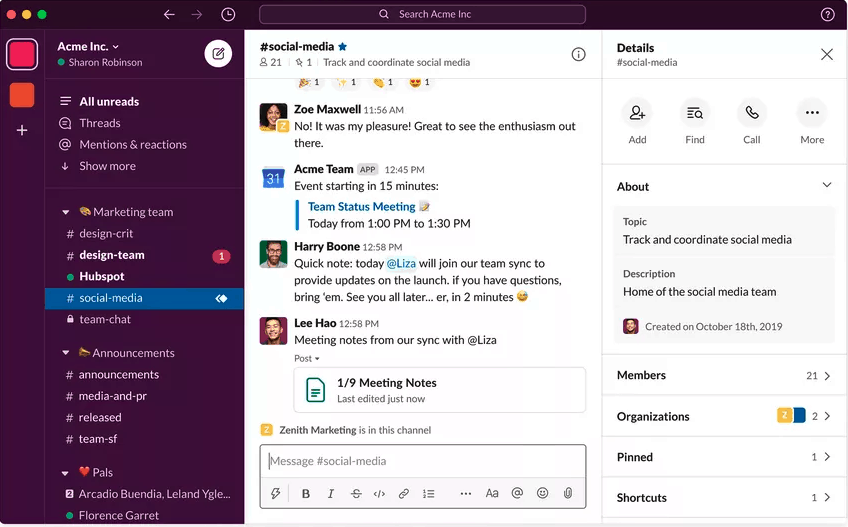
Slack Needs Its Own Section
When it comes to remote collaboration applications, the Grandaddy of Them All has to be Slack. The best thing about Slack is that while it can be real-time, it doesn’t need to be. Through its clever use of opt-in channels, Slack is a chat tool that allows for team-wide, project-based, and interpersonal communication. Slack then organizes all messages reverse chronologically to allow for quick catching up.
Slack also offers video and voice tooling and a raft of plug-ins like Google Docs, Trello, and many more.
Trying to get to Inbox Zero? Most of our team spends most of their communication time in Slack, and email has been relegated to a secondary method.
PRO TIP: In order to push collaboration and transparency allow Direct Messages to expire quickly AND encourage channel communication as opposed to point-to-point conversations.
Get Thee a Second Monitor
Having a second monitor is valuable, and in a dedicated space that’s great, but what about those set up at a more communal space in the home? “It’s really nice to have the option of dual (or triple) monitors even when you’re just set up temporarily at the kitchen table,” suggests Hartman. Consider a fold down monitor like this.
Different Levels of Conversation Get Different Methods
Messaging isn’t always as easy to discuss complex concepts as voice. “If a conversation takes too many pings and pongs I’ll just call.” says Sam Ehlers. “There’s a weird asking for permission to ring your phone etiquette antipattern; the phone ringing is the asking for permission, if they are busy they can squash the call.”
Favorite Tools for Collaboration
Here’s some of the tools that help bind our team together and work closely, even though we’re rarely in the same room.
HELLOSIGN — The easiest way to get legal documents shared and signed. Now a full suite of products beyond signing. [Hellosign]
SLAB — Need to build out a knowledge repository with version control? Slab is an intuitive team repository to share and update information on a page-by-page basis. [Slab]
GITHUB — GitHub is the leading code repository for software development due to its version control and branching tools. Sure, it can be used for other purposes too (wikis, etc.) but something like Slab offers a better learning curve to a broader audience. [GitHub]
CLUBHOUSE — There’s a million project management tools for software teams, but we love Clubhouse the most. [Clubhouse]
TRELLO — A Kanban style list-making application, adding tools like this to a team’s repertoire can add explosive growth to remote teams through easy tracking of individuals’ autonomous use. [Trello]
FIGMA — Design tool similar to Sketch in functionality and features, but with improvements around team collaboration. Steep learning curve without a designer on the team to help others navigate the tool and use the power of design libraries. [Figma]
DROPBOX —file hosting service operated by the American company Dropbox, Inc., headquartered in San Francisco, California, that offers cloud storage, file synchronization, personal cloud, and client software [Dropbox]
GOOGLE OFFICE SUITE — Bring documents, spreadsheets, presentations, and more to life with smart editing and live collaboration. [Docs]
HARVEST — Simple time tracking, fast online invoicing, and powerful reporting software. Simplify employee timesheets and billing. [Harvest]
ZOOM — A leading video conference app, Zoom allows for seamless video calls across teams with dial-in options available too for those on the move or in spotty coverage areas. [Zoom]
UBERCONFERENCE — Similar to Zoom, but I like to think of Uberconference as the “zero entry pool” for teams with less experience (or more work restrictions) used to phone, video, screen sharing. [Uberconference]
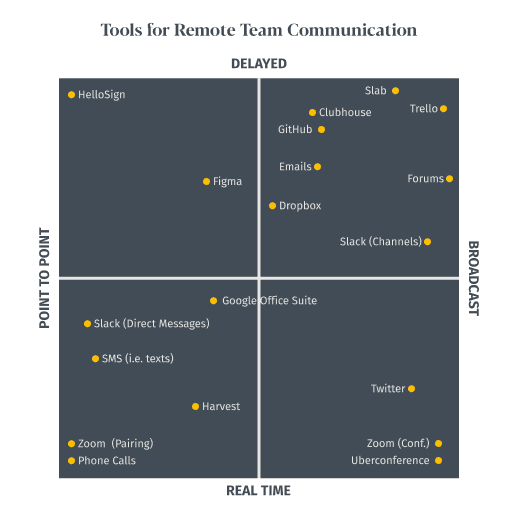
Discovering the truth about ourselves is a lifetime’s work, but it’s worth the effort.
Fred Rogers
One of the great affordances of working from home is that it offers flexibility to slip more fluidly between work and home mode, but that transition is not without effort. It takes practice and intentionality, patience and perseverance to do sustainably.
Like everyone else right now, our days resemble this. We’re trying to embrace the change and the challenge and we wish that for you.
We’d be remiss if we didn’t mention the Ultimate Guide to Remote Work written by Zapier. I know it was eye-opening for me.
Among all the options, if you are looking for ways to help, consider the CDC Foundation or the Fred Rogers Center.
Lastly, my sincere thanks to my teammates Sam Ehlers, Justin Etheredge, Mike Green, Mike Hartman, Derek Heilmann, Branson Lilburn, Caitlin Munley, and Al Tenhundfeld. All of them contributed to this article.
Loved the article? Hated it? Didn’t even read it?
We’d love to hear from you.




Leave a comment